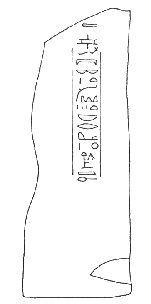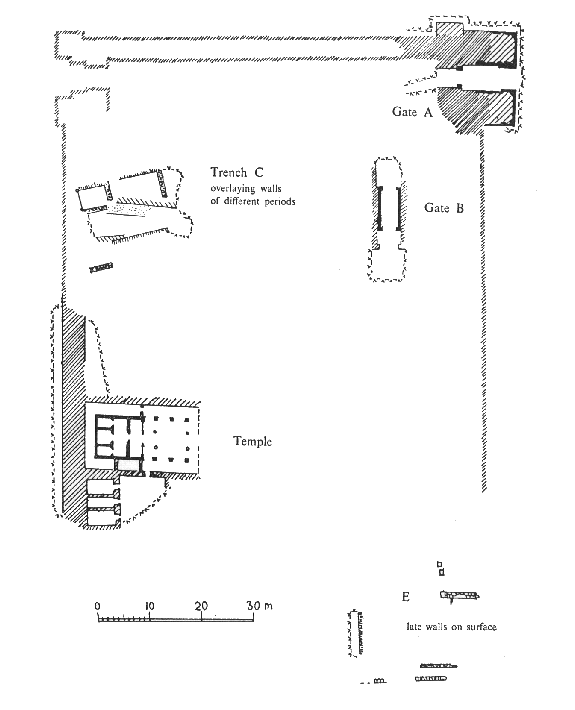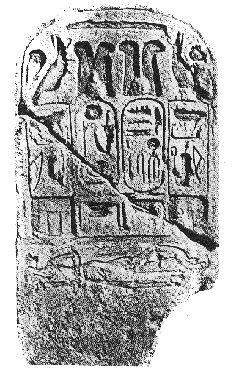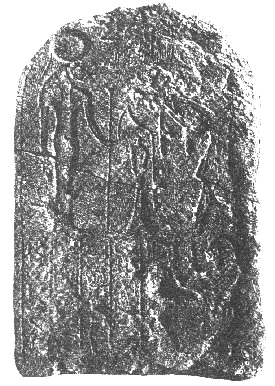The
Late Bronze Age Fortress
The Rough Guide to Egypt (Richardson 2000:516)
describes the Late Bronze Age fortress at ZUR as "a tiny ruined temple-fort".
Based on limited excavations at the site in the 1940s and 1950s, this
description will need to
revised in future editions. Since 1994, a team from the
University of
Liverpool in the United Kingdom, led by Dr Steven
Snape, has
revealed the site to be significantly larger than previously believed
(approximately 20,000m2) and
uncovered a great deal of exciting new evidence and a range of outstanding
finds, greatly adding to our understanding of ancient activity along Egypt's
Mediterranean coast
Click here
for a general view across the site looking west; the coast is to the right and the desert is to the left.
History
of Excavation
| The fortress is
located on the western outskirts of the modern village, in the middle of
the 2km wide coastal strip between the desert to the east and the coast
to the north. It first came to light in 1946 when a local farmer
discovered three inscribed blocks (Habachi 1955:63). As a result, Alan
Rowe, who was at that time Inspector of Antiquities for the Western
Desert, visited the site and was able to trace the remains of three
parallel walls from which the inscribed blocks (ultimately shown to be
door jambs) had originally come (Habachi 1955:63; Rowe 1948:4-5, 77). Of
these, the most significant (fig.i) bore the inscription:
"…real [king's scribe], beloved of him,
troop-commander and superintendent of foreign lands, Neb-Re, justified…"
(Kitchen 1996:294; cf. Habachi 1980:14-15; Rowe 1948:4).
On the basis of the finds, especially this block, Rowe
(1948:4, 77) identified the site as a fortress. Since
the reinvestigation of the site began in 1994, much more evidence of Neb-Re,
effectively commandant of the fort, has been located, which will be
discussed in the Liverpool excavation sections. |
 |

Labib Habachi was the next to take an interest in the site. He
first visited it in 1949, at which time he saw the walls described by Rowe, upon
which he was able to make out figures and the names of Ramesses II (Habachi
1955:63-4). This evidence strongly suggests that it was he who founded this
settlement, sometime during his long reign (c.1278BC to 1212BC). Ramesses'
name has been found many more time during the recent excavations at the site.
As a result of his initial survey, Habachi decided to embark upon three short seasons of excavation in
1952, 1954 and 1955 (Habachi 1955, 1980:15-19; Leclant 1954:75, 1955:310,
1956:263).
His work saw the partial clearance of a rectangular enclosure that he
estimated to be 80m by 100m, defined by a massive mud-brick wall (fig.ii)
(Habachi 1955:64, 1980:16).

In the north-east corner of the enclosure he located
two structures that he identified as gateways, linked by a corridor and giving
access to the main enclosure (Habachi 1980:16). Upon these gateways he describes
scenes showing the victories of Ramesses II over the Libyans, the king and his
chariot and being presented with tribute (Habachi 1955:65, 1980:16).
On the western side of the enclosure, the limestone structure, first located by
Rowe and identified as a temple, was cleared. The walls of this building
survived to around one metre. Habachi (1980:16) was unable to identify any
inscriptions within apart from a trace of one of Ramesses II's names on a
pillar.
Immediately to the south of the temple three structures were located, and
although these were not fully excavated, certain elements were removed including
door jambs and several stelae, which indicated they were chapels (Habachi ibid.). Of these pieces, Habachi
(1980:16-18) identified the following four as the most important:
i) the top of a door jamb, 80cm high, referring to Ramesses II as "destroying
(Tjemeh)" - the Tjemeh were one of several
Libyan tribes - for more details, click here),
ii) a stela, 95cm high, with the names of Ramesses II above two prostrate
Libyans (fig.iii),
iii) a second stela, 125cm high, dedicated by "the standard-bearer,
Amenmessu", showing the king holding by the hair one or more prisoners,
certainly Libyan, whom he is about to smite, and
iv) a third stela, 120cm high, showing Ramesses II offering flowers to Sekhmet,
dedicated by "the royal scribe and the great chief of the army Panhesi"
(fig.iv).
Habachi found sixteen stelae in total, a majority of which, including those
examples described above, were dedicated by military personnel, confirming a
strong military presence at the site (Leclant 1954:75, 1955:310) and Rowe's
supposition that the site was once a fortress.
After Habachi's excavations at Zawiyet
Umm el-Rakham, the site was left in peace until the Liverpool team arrived in
1994 with the aim of further investigating Late Bronze Age activity at the site
and in the region as a whole .




